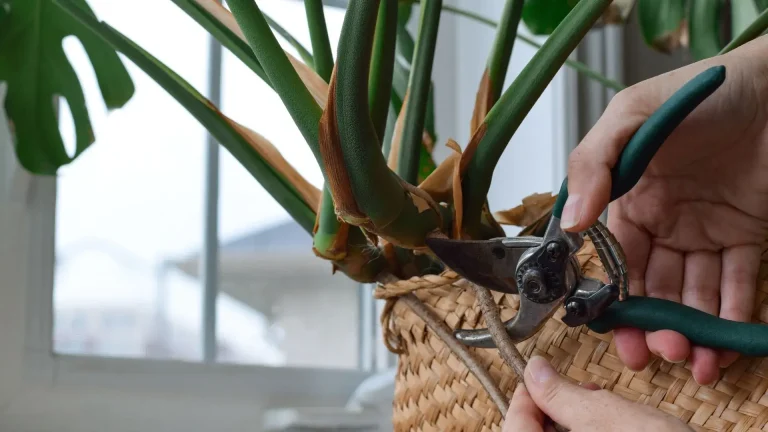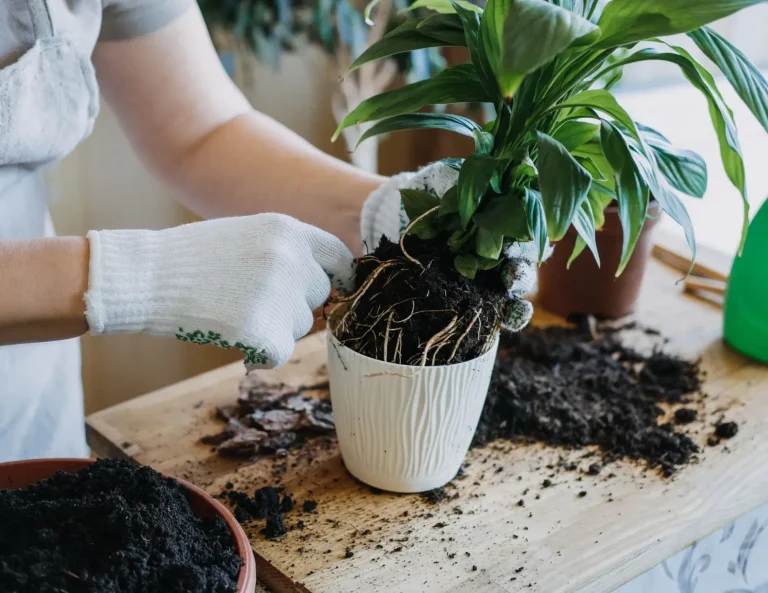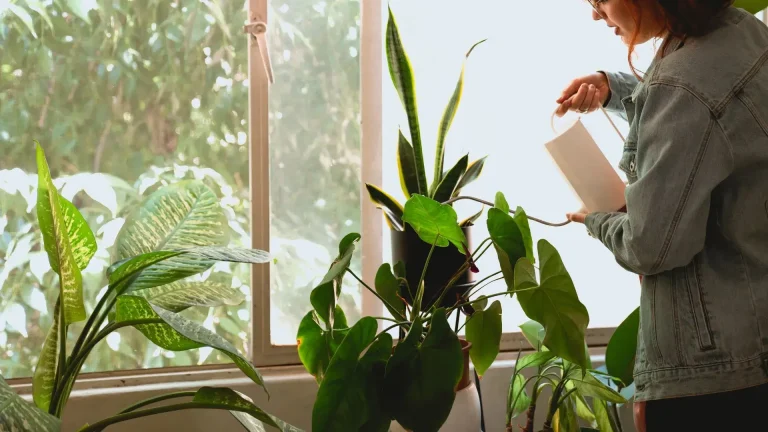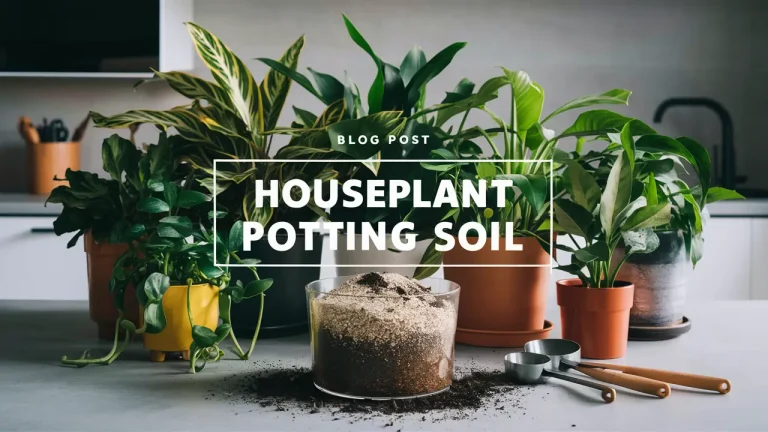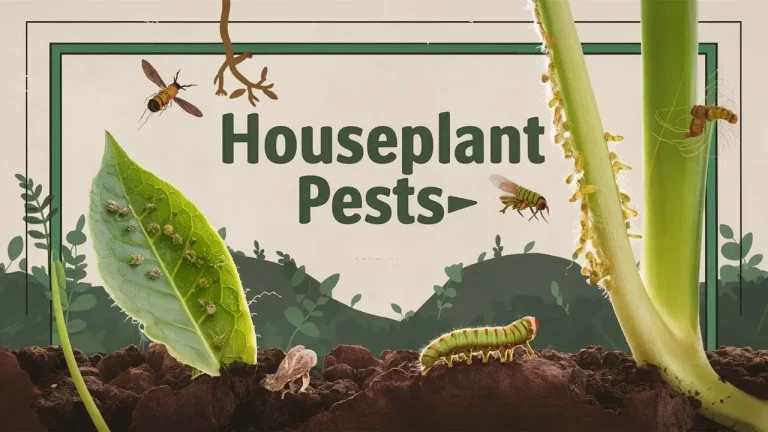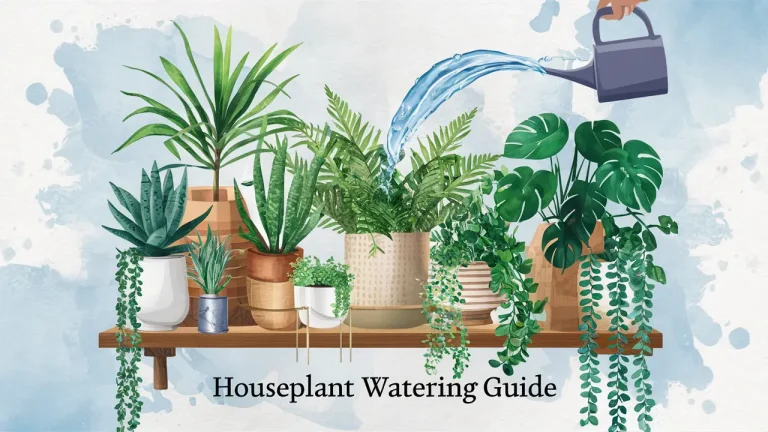Houseplants Humidity Guide: How to Create the Perfect Indoor Environment
Humidity plays a vital role in houseplant care, as it directly influences a plant’s ability to thrive. Many popular houseplants originate from tropical regions where humidity levels are naturally high, often exceeding 60%.
The purpose of this guide is to help you understand the role of humidity in your houseplants’ health and provide practical tips to manage humidity levels for lush, vibrant plants. Whether you’re a seasoned plant parent or a beginner, this guide will equip you with the knowledge to create the perfect environment for your indoor garden.
Table of Contents
What Is Humidity?
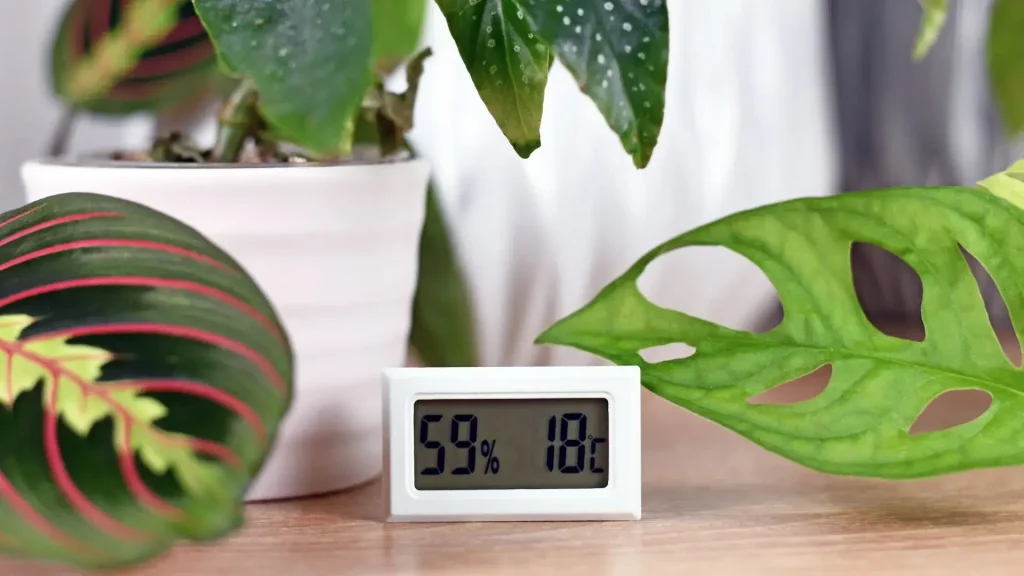
Humidity refers to the amount of moisture in the air, typically expressed as relative humidity (RH). This percentage measures the current moisture level relative to the maximum amount the air can hold at a specific temperature.
For example, 50% RH means the air contains half the maximum moisture it can hold at a given temperature.
The Relationship Between Humidity, Temperature, and Air Circulation
These three factors work together to create a balanced environment for your plants:
- Temperature: Warmer air holds more moisture, but high heat combined with low humidity can dry plants out faster.
- Air Circulation: Proper airflow reduces the risk of mold and fungal growth in humid environments, ensuring plants stay healthy.
Why Is Humidity Important for Houseplants?
Humidity significantly impacts plant processes like transpiration and photosynthesis. Transpiration allows plants to release moisture from their leaves, which is critical for nutrient uptake and temperature regulation. Photosynthesis, the process by which plants convert sunlight into energy, also relies on adequate moisture levels.
Low humidity can cause issues like brown leaf edges, curling leaves, and wilting, while excessively high humidity can promote mold growth and attract pests. Understanding the ideal humidity levels for your plants is key to preventing these problems and ensuring healthy growth.
Measuring Humidity in Your Space
Accurate measurement is essential for maintaining the right humidity for your plants.
Using a Hygrometer
A hygrometer is a simple and effective tool for measuring indoor humidity levels. It provides an accurate reading of the moisture in the air, allowing you to adjust conditions as needed for your plants. Compact and affordable, hygrometers are a must-have for any dedicated plant parent.
Placement Tips for Accurate Readings
- Place hygrometers near your plants, at leaf level, for the most accurate representation of their immediate environment.
- Avoid placing meters directly near humidifiers or air vents to prevent skewed readings.
Factors That Influence Indoor Humidity
Several factors can impact the humidity levels in your home, including:
- Seasonal Changes: Winter heating and summer air conditioning can dry out the air.
- Room Conditions: Kitchens and bathrooms naturally have higher humidity due to cooking and showering.
- Ventilation: Well-ventilated spaces may have lower humidity, as moisture dissipates more quickly.
Ideal Humidity Levels for Common Houseplants
High Humidity Plants (60–80% RH)
These plants originate from tropical rainforests and thrive in moist environments:
Examples: Ferns, calatheas, orchids, and anthuriums.
Care Note: High humidity helps prevent leaf browning and curling in these species.
Moderate Humidity Plants (40–60% RH)
Most common houseplants are adapted to moderate humidity and are relatively low maintenance:
Examples: Pothos, philodendrons, peace lilies, and spider plants.
Care Note: They tolerate some fluctuations but benefit from consistent levels in this range.
Low Humidity Plants (20–40% RH)
Desert plants are adapted to arid conditions and prefer lower humidity:
Examples: Succulents, cacti, and snake plants.
Care Note: Overly humid environments can lead to rot and fungal issues in these species.
Signs That Your Plants Need Higher Humidity
Low humidity can stress houseplants, particularly those that thrive in moist environments. Here are some key visual symptoms to watch for:
Visual Symptoms of Low Humidity
- Brown or Crispy Leaf Edges: The tips or edges of leaves turn brown and dry, especially in tropical plants.
- Leaf Curling or Distortion: Leaves may curl inward, wrinkle, or take on an unnatural shape as they struggle to retain moisture.
- Stunted Growth and Wilting: Plants grow more slowly or fail to produce new growth. Leaves may appear limp or droopy.
Specific Stress Indicators in Tropical and High-Humidity Plants
- Tropical plants, such as ferns and calatheas, may develop faded, thin leaves or lose vibrancy in their foliage when exposed to dry air.
- Orchids might drop flower buds prematurely, a sign of stress due to low humidity.
Grab my printable plant care tracker to monitor humidity, watering, light, and more!
How to Increase Humidity for Houseplants?
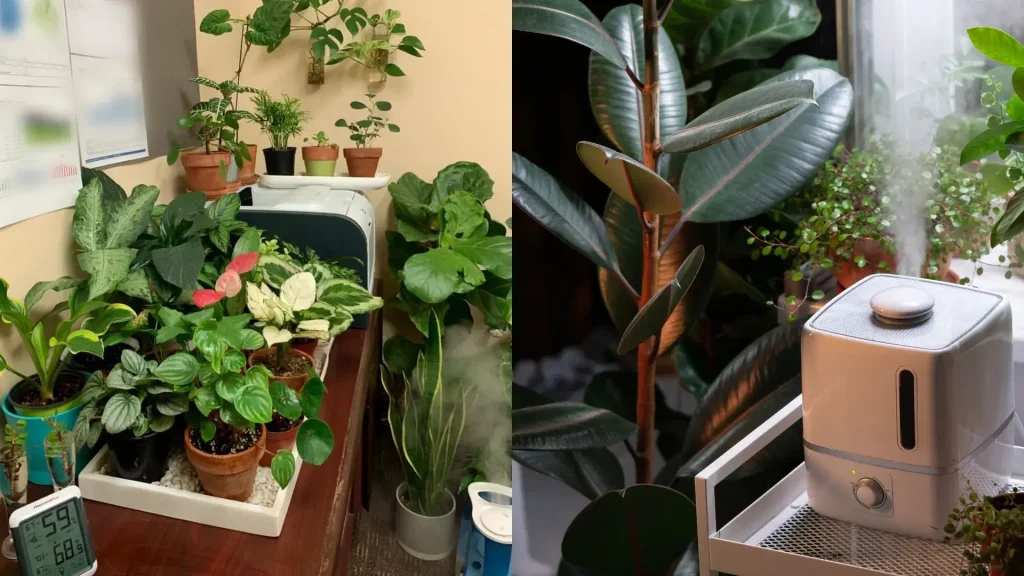
1. Using a Humidifier
A humidifier is one of the easiest and most effective ways to raise humidity levels. Position it near your plants and run it on a low setting to provide consistent moisture without saturating the air.
2. Misting Plants
Misting involves spraying a fine mist of water onto your plants’ leaves. While this offers a quick humidity boost, the effect is short-lived and may not be suitable for plants prone to fungal issues.
3. Pebble Trays
Fill a shallow tray with pebbles and water, then place your plant on top (without submerging the pot in water). As the water evaporates, it creates a localized humid environment around your plant.
4. Grouping Plants Together
When plants are grouped, their transpiration creates a natural humid microclimate. This method is especially effective for tropical plants.
5. Placing Plants in Humid Areas
Bathrooms and kitchens are excellent spots for humidity-loving plants. The steam from showers or cooking provides natural moisture to the air.
Techniques to Decrease Humidity for Your Houseplants
1. Improving Air Circulation
Use fans to increase airflow around your plants. This prevents excessive moisture buildup, reducing the risk of mold and mildew.
2. Using Dehumidifiers
If your indoor environment is too humid, consider using a dehumidifier to bring levels down to a more manageable range.
3. Adjusting Watering Practices
Overwatering can increase humidity around plants, especially in poorly ventilated areas. Water your plants only as needed to prevent overly damp conditions.
Final Thoughts
Humidity is a critical yet often overlooked aspect of houseplant care. Maintaining the right humidity is essential for the health and growth of houseplants. Key takeaways include:
- Monitor humidity using hygrometers to understand your home’s microclimates.
- Adjust humidity levels to suit specific plant types, increasing or decreasing as needed.
- Observe your plants regularly for signs of stress and adjust care strategies accordingly.
By paying attention to humidity and its effects, you can create a thriving indoor garden that mimics the natural environments your plants need to flourish year-round.

